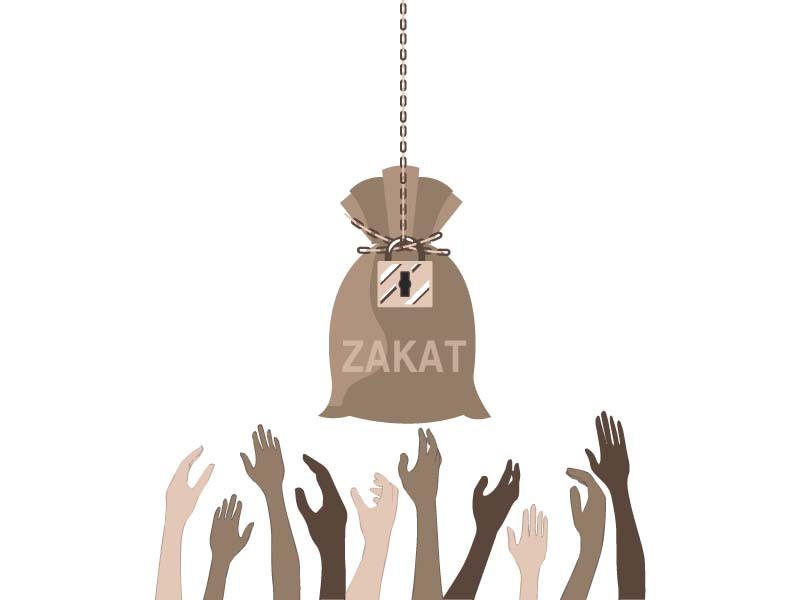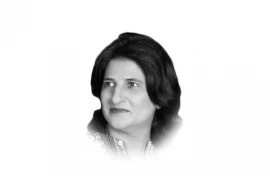
Every year during Ramazan, the federal government collects Zakat from the country’s populace through banks and then distributes it amongst provinces, as per their population; however, many in Sindh are not even aware of the mechanism used to disburse this amount.
The main instrument which is used to disburse Zakat, to those who deserve it, is the Zakat Card but getting ahold of one is a strenuous exercise. The process starts after the provincial government forms Zakat Committees at the Union Council (UC) level and each is headed by its own Chairman. “Usually a 13-member committee is formed, which reports to the District Zakat Committee,” informed Muhammad Akram, who is the Chairman of a Zakat Committee in one of Karachi’s UC.
Giving details about the functioning of the committee, Akram said that they had no administrative or financial powers. “Our job is to merely vet the Zakat forms and pass them on to the district committee, which then verifies the form and gives it to the provincial Zakat department. After this 3 stage process, a Zakat Card is issued,” the Chairman explained.
As per Akram, every year only 25 people are issued a card. Sara Umair, who was one the lucky ones to get a card, while talking to The Express Tribune about the process, said that barely a few people know about it. “I searched for my local Zakat Committee but could not find it until someone got me in touch with a member of the committee,” Umair said, adding that her card helps her tend to her drug addicted husband and provide for her child. Umair further said that had there been any publicity about the committee at the government level, she could have applied for a card sooner.
Akram, when asked about the lack of publicity, was bemused. “We do not even have an office, so advertising is a long shot. We only have the authority to verify a Zakat form and send it onwards,” he said.
Whoever gets the Zakat card, opens an account in a private bank and obtains an ATM card after which they receive Rs 6,000 every 3 months, as per Akram. Part of the reason why the amount is low is due to the federal government distributing the Zakat to the province in line with their total population. According to official data obtained by The Express Tribune, 57.36 per cent of the collected Zakat amount is given to Punjab; 23.71 per cent is given to Sindh; 13.82 per cent to Khyber Pakhtunkhwa (K- P); and 5.11 percent to Balochistan.
However, in disbursing Zakat proportionate to population, the actual poverty rate for provinces is not accounted for. As per data obtained from the Benazir Income Support Program (BISP), the poverty rate in Sindh is 45 per cent, followed by Balochistan at 44 percent, K-P at 37 per cent, and Punjab with 21 per cent. Thus, the province with the lowest poverty rate ends up getting the highest share of the annual Zakat.
The same problem of distributing as per population instead of poverty rate persists once the Zakat reaches the provincial Zakat department. To illustrate, as per data obtained by the department, Karachi’s District East, has a population of 8.174 per cent, whereas Tando Muhammad Khan, is Sindh’s least populated district at 1.414 per cent. However, despite the poverty rate in the latter being much higher than the former, Karachi’s District East gets a larger share of the Zakat.
The other reason for low Zakat disbursements, is the lack of trust in government, as per Arif Lakhani, leader of a social welfare organisation. “The people prefer giving to renowned welfare organisations because they know that it will actually reach deserving people,” he opined. However, Lakhani was of the view that the existing government system could still be improved to help more people. “The system should be better coordinated and advertised so that more people are aware of the financial assistance being offered.”
Tarranum Naz, a local female welfare volunteer, agrees. “Zakat Committees should be computerised just like the BISP. Furthermore, the annual number of cards issued should go up to 100 instead of 25. Moreover, the 2 to 3 month timeline of obtaining a card should be reduced,” Naz suggested while talking to The Express Tribune.
Published in The Express Tribune, November 16th, 2022.



1731454275-0/Martha-(2)1731454275-0-165x106.webp)
1731451969-0/Trump-(4)1731451969-0-165x106.webp)
















COMMENTS
Comments are moderated and generally will be posted if they are on-topic and not abusive.
For more information, please see our Comments FAQ